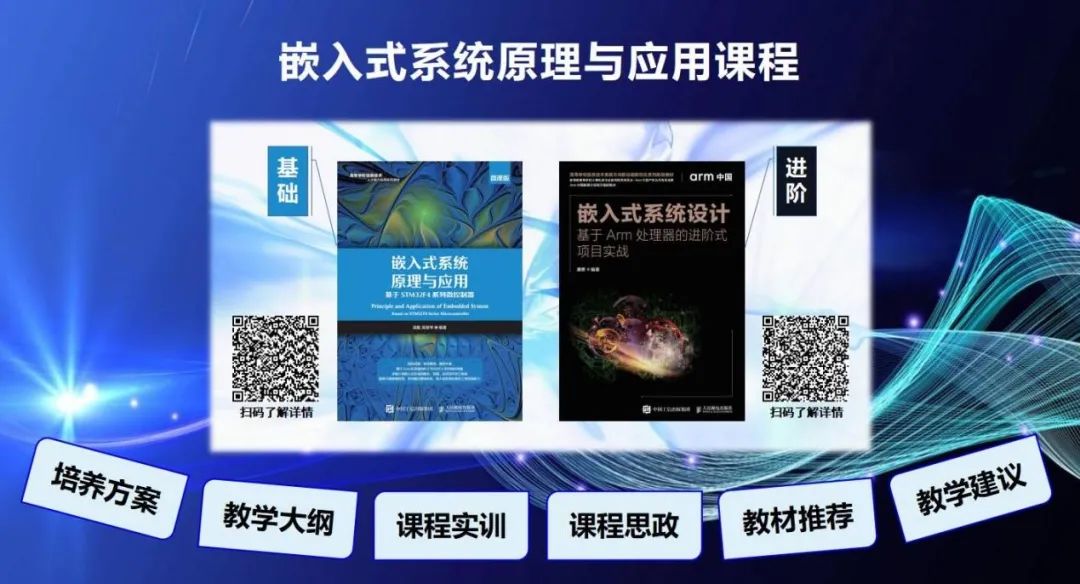
With the commercialization of 5G technology, the era of the Internet of Things is approaching. The fourth industrial revolution, represented by the Internet of Things, big data, and artificial intelligence, has begun, making smart hardware, mobile IoT, and edge computing hot areas for research and development. The principles and development methods of embedded systems have become essential knowledge for embedded system developers in the 5G era.
However, how can frontline teachers effectively educate and cultivate practical talents that meet the requirements of new engineering for the embedded systems principles and applications course? This question has always lingered in our minds. To address this, experts and scholars in higher education have continuously reformed and improved the course, such as adding practical applications and advanced projects to the theoretical curriculum to cultivate students’ product development capabilities. We hope this article can serve as a catalyst for the teaching reform of “Principles and Applications of Embedded Systems” courses in higher education institutions in China.
1. Basic Information
Course Code: xxx
Chinese Name: 嵌入式系统原理与应用
English Name: Principles and Applications of Embedded System
Total Hours: 48 (32+16)
Total Credits: 2.5
2. Course Introduction and Teaching Objectives
Embedded systems have been widely applied in various fields such as industrial control systems, smart appliances, communication devices, medical instruments, and smart instrumentation, deeply integrating into modern society’s production and life. For example, common network switches, CNC machine tools, handheld smart instruments, smartphones, and smart TVs are all carriers of embedded systems. “Principles and Applications of Embedded Systems” is a mandatory foundational course for students in electronic, computer, automatic control, and intelligent manufacturing majors in higher education institutions, holding significant professional status.
The course is aimed at undergraduate students in electronic, computer, automatic control, and intelligent manufacturing majors, with the goal of enabling students to understand the working principles of embedded systems from an architectural perspective, specifically mastering the working principles and programming methods of Cortex-M architecture processors, and through case training, being able to apply related knowledge in various scenarios, thus mastering the general rules of embedded system design and development. Through this course, students will establish a comprehensive concept of embedded systems and be able to select appropriate embedded processors and peripherals based on application requirements, engaging in software development on specific embedded system platforms.
Teaching Objectives of the Principles and Applications of Embedded Systems Course

3. Teaching Arrangement (Theory 32 + Practical Training 16)
Teaching Arrangement of the Principles and Applications of Embedded Systems Course
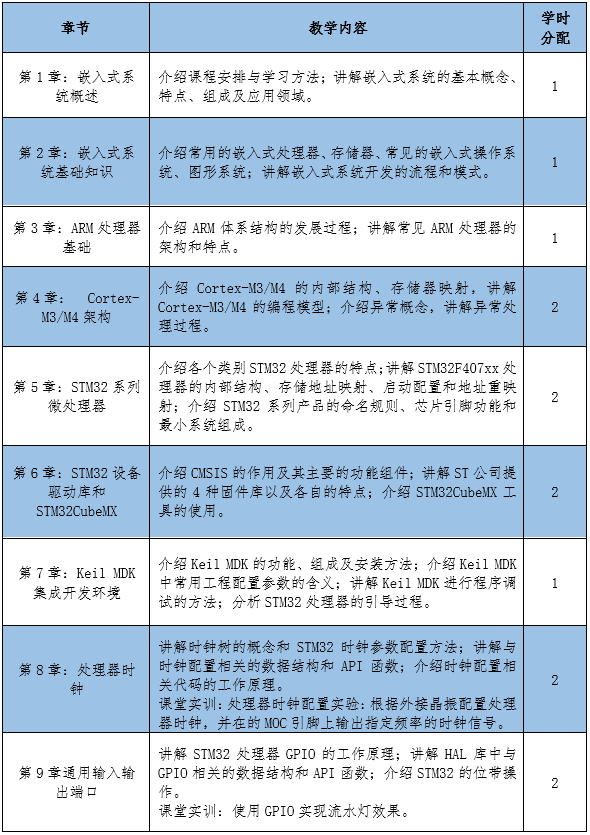
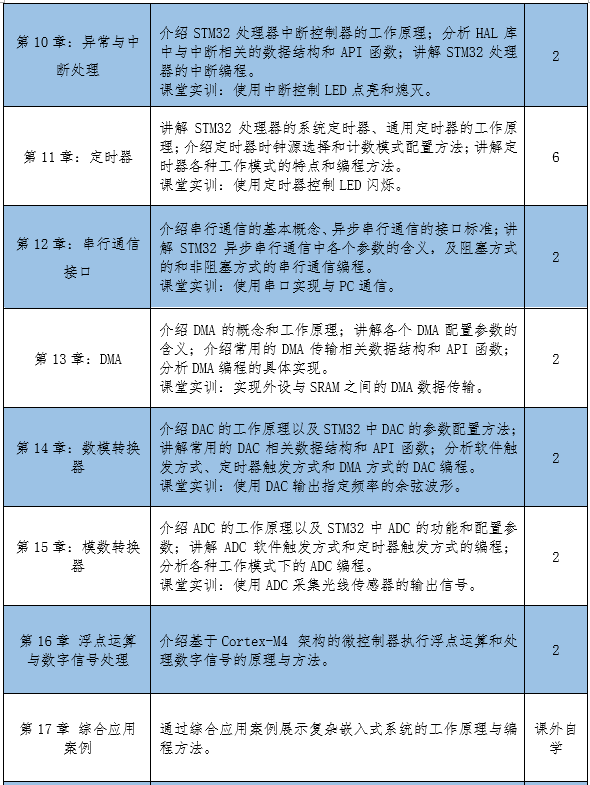
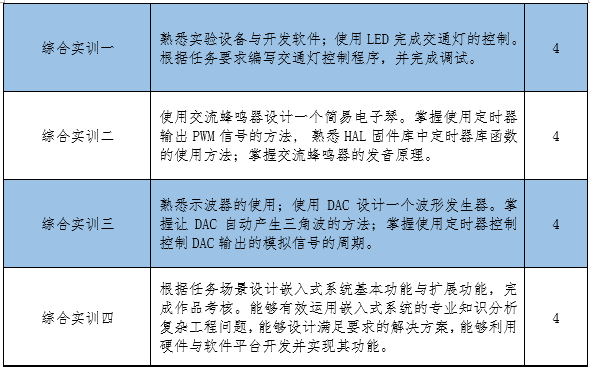
4. Course Assessment
Course Grades Composition: Classroom Performance and Homework + Experimental Scores + Final Exam Scores.

To better assist teachers in formulating the syllabus for the “Principles and Applications of Embedded Systems” course and to enhance teaching effectiveness, we provide the training programs from several universities for your reference.
To enable students to acquire comprehensive practical abilities related to embedded system development, it is recommended to conduct practical training alongside theoretical teaching. The content of the practical training corresponds to that of the theoretical teaching.
The entire practical training is divided into two parts: classroom practical training and comprehensive practical training, each including a certain number of examples, as shown in the figure below. Classroom practical training focuses on learning and applying specific knowledge points, while comprehensive practical training emphasizes practical application. Instructors can freely select according to the class schedule and the characteristics of the class. Relevant example source code and the electronic version of the experimental guide manual for this course can be downloaded from the Renyou Education Community (www.ryjiaoyu.com).
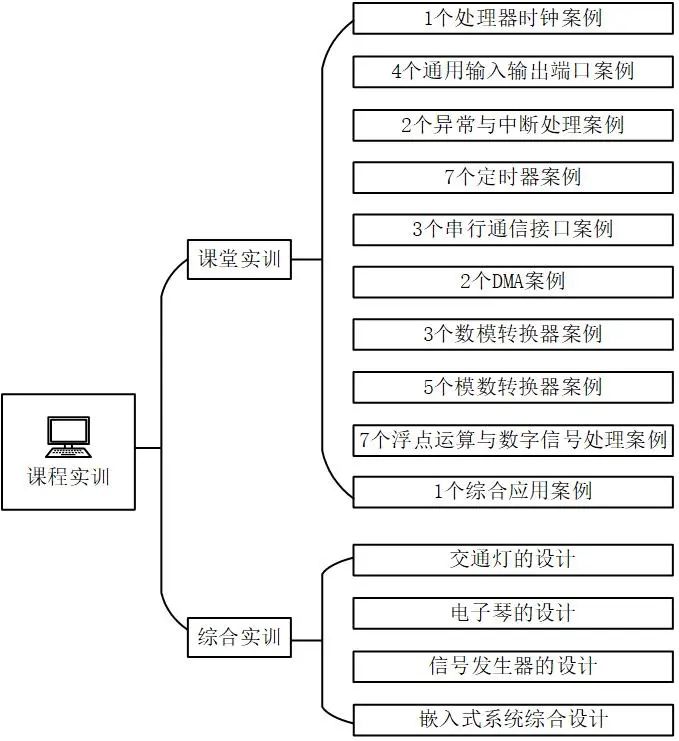
[Download] Source Code of Examples + Experimental Guide Manual (Electronic Version)
For a long time, students’ ideological and political education has mainly relied on ideological and political courses, neglecting the important role of professional courses in ideological education, resulting in students’ ideological and political levels not meeting talent training requirements, and issues such as a lack of cultural understanding and deviation in value orientation in actual work. In the long-term teaching process of professional courses, the content has heavily focused on the application and mastery of techniques, yet there is rarely any reflection on “ideological and political education” in the classroom, often feeling a lack of ideological guidance, especially in terms of personal qualities and value orientation.
In classroom teaching, the deep integration of the professional course teaching system and ideological and political construction needs to address the following key issues.
Key Issues and Solutions of Course Ideology and Politics

Examples of Ideological and Political Teaching in Principles and Applications of Embedded Systems
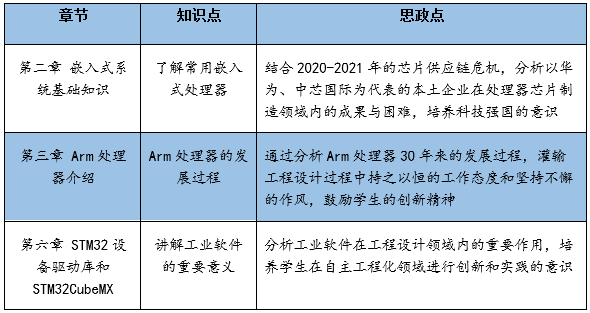
[Learn About Course Ideology and Politics]
## From “Ideological and Political Courses” to “Course Ideology and Politics”
## Constructing a Large Framework for Ideological and Political Education in Courses
[Entering Course Ideology and Politics]
## How to Build the Teaching Model of “Course Ideology and Politics”
## “Course Ideology and Politics” Returns Teachers to the Original Intention of Educating
[Conducting Course Ideology and Politics]
## Ideological and Political Teaching Practices in the “Embedded Systems and Applications” Course
## Reflections on Integrating Ideological and Political Elements into Embedded Systems A Course Teaching
## Analyzing the Integration of Ideological and Political Elements into “Embedded Application Development” Courses in the Context of Informationization
[Implementing Course Ideology and Politics]
## Guidelines for Designing “Course Ideology and Politics” Teaching
## Beijing Lian University Explores the Ideological and Political Education Elements Contained in Various Courses, Promoting Classroom Teaching Reform through “Course Ideology and Politics”
Quality Textbooks on Embedded Systems
[Basics + Advanced]
Created by Renowned Educators
Keeping Up with the Latest Technological Developments
Interest-Driven Project-Based Learning
Rich Supporting Educational Resources
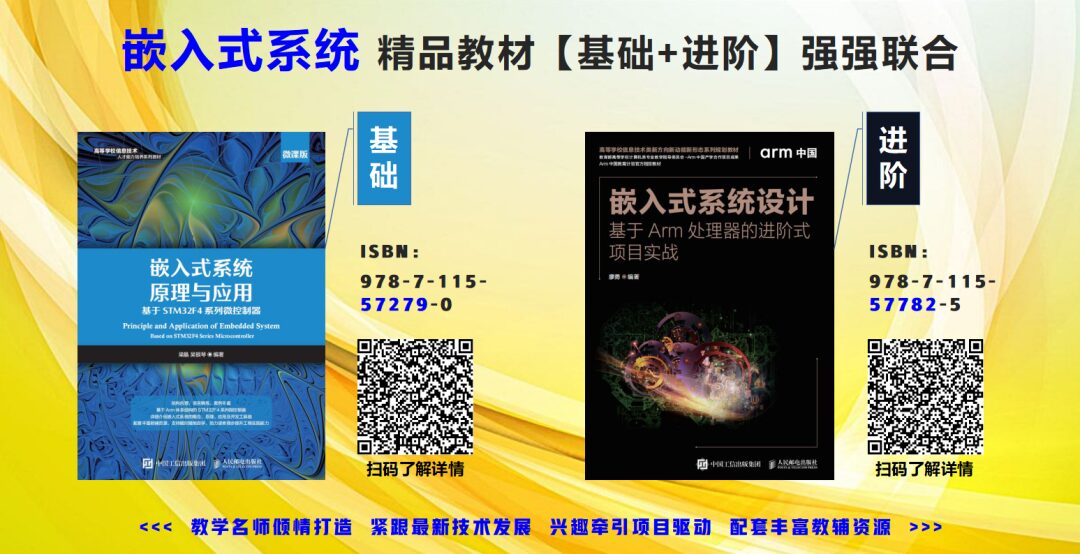
[Scan to Learn More About the Textbook]
The author has developed high-quality, multi-dimensional supporting educational resources for the book “Principles and Applications of Embedded Systems”, as follows.
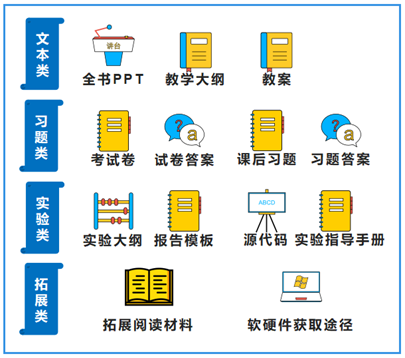
[Download] Supporting Multi-Dimensional Educational Resources for This Book
[Teaching Suggestions Small Classroom]
Teaching Suggestions – Small Classroom PPT.pptx
[Embedded Systems Principles and Applications Teaching Exchange Group]

